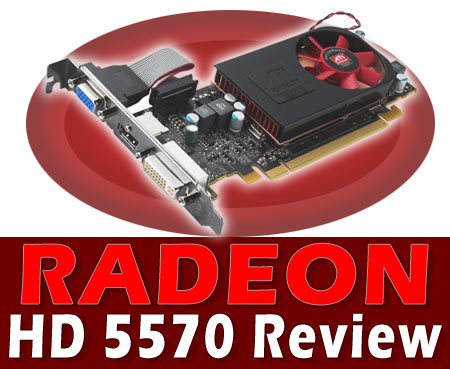ATI Radeon HD 5570: Reasonable Gaming Performance For $80?
AMD's $80 DirectX 11 Card
In September of 2008--almost a year and a half ago--ATI surprised everyone on a budget with the launch of its Radeon HD 4670. Released at $80, the card was priced to fight the entry-level GeForce 9500 GT, and yet the 4670's specifications were comparable to the previous-generation's Radeon HD 3870 flagship.
To make a long story short, the Radeon HD 4670's performance humiliated its competition. With 320 shader cores at its disposal, the Radeon HD 4670 changed the game at its price point. The card's presence forced Nvidia to create the GeForce 9600 GSO from high-end parts that were more expensive to manufacture, also causing the company to drop the price of its GeForce 9600 GT.
Since its inception, the Radeon HD 4670 has remained one of the best budget gaming cards on the market (and a staple recommendation in our Best Graphics Cards For The Money column). It is also notable that it held the distinction of being the fastest reference card that didn't require a dedicated PCIe power cable for over a year, until Nvidia introduced its GeForce GT 240, later bested by ATI's Radeon HD 5670.
ATI truly raised the bar on what we now expect from an $80 graphics card with its Radeon HD 4670. And it just so happens that today, AMD is releasing the spiritual successor to that venerable card in its Radeon HD 5570, also priced to compete at $80.

With the Radeon HD 5450 too slow to provide enthusiast-class gaming performance on a budget, and the Radeon HD 5670 priced at $100, we certainly can't help but to have high hopes that this new card might be the Holy Grail; an offering able to deliver usable triple-monitor Eyefinity gaming performance on an entry-level budget.
Get Tom's Hardware's best news and in-depth reviews, straight to your inbox.
Don Woligroski was a former senior hardware editor for Tom's Hardware. He has covered a wide range of PC hardware topics, including CPUs, GPUs, system building, and emerging technologies.
-
johnbilicki Because someone who is going to consider buying a 5570 is so going to pair it with a socket 1366 which makes up for a massive 1% of all CPU's Intel is selling. This is the kind of card someone's parent is going to wonder to the store and pick up so their daughter can play The Sims. 50+ FPS in Crysis? >__>Reply -
xaira i thought this would be cheaper, cant wait for fermi to come and reduce amds horrible pricing of the low end lineup, the 5670 shudve had 640 stream processors!!!Reply -
megamanx00 I would have liked to have seen how this stacks up against the GT240 with GDDR3 as the 5670 already knocked the GT240 with GDDR5 off its perch.Reply -
johnbilicki xairai thought this would be cheaper, cant wait for fermi to come and reduce amds horrible pricing of the low end lineup, the 5670 shudve had 640 stream processors!!!Reply
AMD/ATI set the MSRP to $320 for the 5870, blame the retailers for jacking the prices up since nVidia hasn't yet put anything out to compete with. -
megamanx00 Anyway, still a good budget card. I bet this card is made so that AMD can afford to sell it a little less than what even the Radeon 4650 is currently going for, while the 5670 may even fall below the $64 the cheapest 4670s are going for.Reply -
burnley14 Disappointing performance increase considering it's supposed to be replacing a card from over a year ago. I would have thought they could have mustered something better.Reply -
skora I like it,that power draw had me fall out of my chair. Definitely a HTPC with limited gaming option.Reply -
notty22 Well people with a 'old' 9600gt won't be up?grading to this for a 20% loss of performance. Something for everyone I guess.Reply -
ta152h The paper clip is poor as a size reference point, since paper clips are not all the same size. Because of that, it's impossible to know the actual size of the die, since we don't know the size of the paper clip.Reply